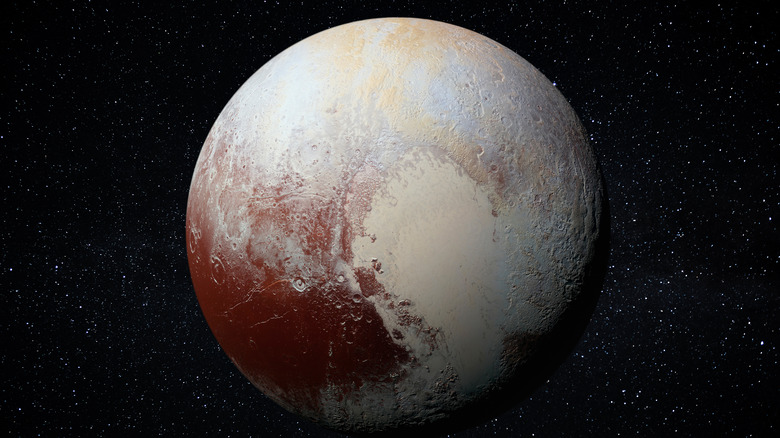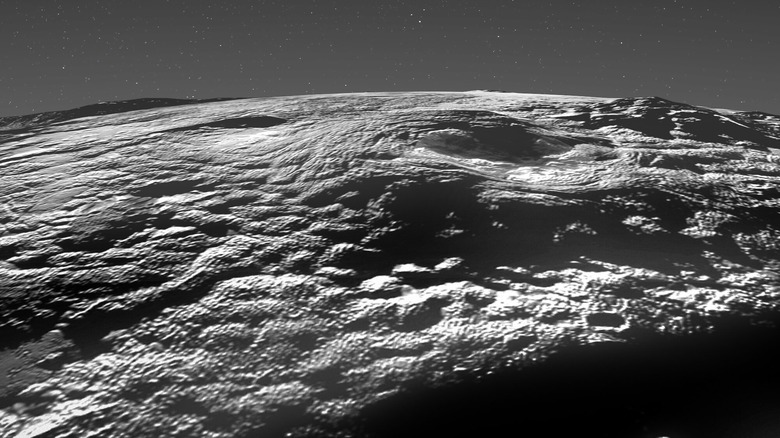What The Recent Finding Of Ice Volcanoes On Pluto Actually Means
Strange features spotted on the surface of Pluto may be due to the activity of ice volcanoes, according to a new study using data from the New Horizons mission. The activity could have created features like large domes and rises, formed when material was spewed out of the icy volcanoes. The research, published in the journal Nature Communications, uses data from the NASA New Horizons probe which was launched in 2006. The mission flew past Pluto in 2015, before heading out into the depths of space. By April 2021, the mission was 50 times further away from the sun than the Earth is.
The data from the mission's flyby of Pluto is still being analyzed, however, and it was this data that provided the new insights into Pluto's cryovolcanic activity. To learn about the activity on Pluto — which is no longer considered a planet, but is now technically known as a dwarf planet — the researchers looked at an area of the surface covered in large domes, southwest of the Sputnik Planitia region. These domes are between half a mile and four miles tall and 18 to 60 miles across, and there are also interconnected hills and depressions forming a type of surface feature called hummocky terrain.
"The particular structures we studied are unique to Pluto, at least so far," said Dr. Kelsi Singer, New Horizons Deputy Project Scientist from the Southwest Research Institute and lead author of the paper. "Rather than erosion or other geologic processes, cryovolcanic activity appears to have extruded large amounts of material onto Pluto's exterior and resurfaced an entire region of the hemisphere New Horizons saw up close."
What the findings tell us about Pluto
One reason that these findings are surprising is that it challenges what we know about the history of Pluto. The structures identified in the research are relatively young, meaning they have been formed relatively recently. The researchers can tell that because of the few impact craters in the area, which are formed when the dwarf planet is impacted by asteroids. Few impact craters mean that the terrain was formed relatively recently, covering up older impact craters. But to form the structures seen, there would have to be heat in the interior of the planet, even though Pluto is so far from the sun that its surface temperatures are very low. The heat would be necessary to keep the water ice material in the volcanoes at the right consistency to spread over the surface as is seen in the data (via SWRI).
That means that Pluto would have retained interior heat until relatively recently, which is different from what researchers had predicted about the development of the dwarf planet over time. It was generally thought that Pluto would have lost most of its internal heat long ago, but, in fact, it somehow retained that heat for a long period (via Phys.org). "One of the benefits of exploring new places in the solar system is that we find things we weren't expecting," said Singer. "These giant, strange-looking cryovolcanoes observed by New Horizons are a great example of how we are expanding our knowledge of volcanic processes and geologic activity on icy worlds."

